Premise
Not surprisingly, soapwort bears this name: we are talking about a plant that, just like soap in water, foams thanks to its detergent properties made by the abundant content of saponins.
In the past, soapwort was widely used for its physical-mechanical properties (excellent product for washing fabrics - wool in particular) and therapeutic (expectorant, purifying, diuretic, irritant of the mucous membranes - related to the expectorant capacity - remedy against skin diseases) ;

Botanical analysis
The plant commonly known as soapwort or red soapwort, in botany it is Saponaria officinalis, member of the family of Caryophyllaceae. The genre Saponaria it includes about 30 species of biennial or perennial plants, typical of the European lands up to Siberia: the herbaceous plant generally grows in humid soils, near hedges and paths, and is widely used to decorate rock gardens.
The stems of the soapwort show many ramifications; generally, the stems, cylindrical and large, do not exceed one meter in height. The basal leaves are petiolate, unlike the caulinary, sessile: they are lanceolate, opposite and have a yellowish color, sometimes tending to green. The graceful and elegant soapwort flowers, consisting of five lilac or pinkish bank petals, are always gathered in terminal panicles: similar to carnations, they bloom in clusters during the spring, and are very numerous, so much so as to almost hide the leaves.
The fruits of the soapwort are capsules that contain many brownish seeds.
Even if they prefer loose and well-drained soils, soapwort plants easily develop in any type of soil; however, an "excessive moisture in the earth can be responsible for the death of the plant."
Active ingredients of soapwort
In phytotherapy, soapwort root is used, rich in saponins, flavonoids and vitamin C.
The marker of the soapwort is quillaic acid, the saponin that characterizes its phytocomplex. The quillaic acid content varies from 2.5 to 5%, depending on the time of harvest: the amount of this saponin is maximum in the months preceding the flowering (April and May), and minimum in summer (July and August), corresponding to the period of full flowering.
Among the compounds of a flavonoidic nature, the vitexin and the saponaretin, saponarins contained mainly in the leaves of soapwort, cannot be missing.
Among the other chemical constituents, we mention: glyceric acid, glycolic acid, galactans, gums and essential oil (0.185%).
Property
As the name itself suggests, the therapeutic virtues of soapwort are mainly due to the presence of saponins.
First of all, soapwort is known for its expectorant virtues: taken orally in the form of a decoction, soapwort favors an increase in bronchial secretion, which becomes more abundant and fluid. Furthermore, the saponins cause an irritation at the level of the mucosa, useful for promoting the elimination of sputum.
The saponins contained in the soapstone stimulate diuresis: eliminated by the kidney, in fact, they exert a local stimulus facilitating the excretion of urine. Clearly, the diuretic activity is associated with the purifying and diaphoretic activity.
It should not be forgotten that saponins are able to enhance the pharmacological activity of some substances: a typical example is the synergy between saponins and digitalis derivatives (eg. Digitalis purpurea).
For topical use, products formulated with soap extracts are used as skin purifiers.
Recently, the hypocholesterolemic activity of soapwort has been demonstrated on laboratory guinea pigs: in fact, the compounds of saponin derivation seem to influence the intestinal absorption of cholesterol. [adapted from Dictionary of Phytotherapy and Medicinal Plants, by E. Campanini]
Taken orally, the saponins of the soapwort are useful against febrile states, liver and gastrointestinal disorders.
Cosmetic use
Known for centuries is the foaming use of soap in natural cosmetics: after being filtered, the decoction of soap can be used as a valid alternative to the classic shampoo, particularly suitable for brittle hair, which tends to break. The soap is also used for cleansing of delicate skin, also recommended to purify skin affected by psoriasis or acne.
Also useful for washing fabrics, soapwort is used in the production of detergents and laundry soaps.
Saponaria and toxicity
Taken orally at high doses, soapwort saponins are toxic: not surprisingly, the administration of soapwort extracts must be carefully dosed.
Injected, the active ingredients of soapwort can generate convulsions, inflammation of the kidneys, hemolysis and bloody diarrhea; the symptoms of excessive intake of saponins can degenerate to weaken or paralyze the muscles, generate a cardiovascular depression and, in the most serious cases, lead to death.
For topical use, soapwort extract can cause irritation of the skin or mucous membranes.
Summary
SAPONARIA: to fix the concepts ...
- Botanical name: Saponaria officinalis
- Family: Caryophyllaceae
- Short description: biennial or perennial herbaceous plants
- Origin: European lands up to Siberia
- Diffusion: humid soils, near hedges and paths
- Stems: show many ramifications; they are cylindrical and large
- Height: 1 meter
- Basal leaves: petiolate
- Caulinary leaves: sessile
- Leaves in general: lanceolate, opposite with a yellowish color, sometimes tending to green
- Flowers: graceful and elegant, white or lilac, very numerous
- Fruits: capsules that contain many brownish seeds
- Soils: loose and well drained
- Excessive humidity: causes the death of the plant
- Saponins: quillaic acid → phytocomplex marker
- Flavonoids: vitexin and saponaretin
- C vitamin
- Other components: glyceric acid, glycolic acid, galactans, gums and essential oil (0.185%)
- Expectorants
- Increased bronchial secretion
- Mucosal irritant
- Diuretica
- Depurative and diaphoretic
- Skin cleansing (topical application)
- Hypocholesterolemic
- Antifebrile
- Hepatoprotective
Topical application of soap-based products: cleansing skin affected by psoriasis / acne
Useful for washing fabrics and wool
- Oral: (excessive doses) → convulsions, inflammation of the kidneys, haemolysis, bloody diarrhea, muscle weakness / paralysis, cardiovascular depression and death
- Topical application: skin irritation (saponins from soapwort)
Select plant Fir Acacia Acerola Sorrel Yarrow Yarrow Yarrow Aconito Adatoda Garlic Agnocasto Agrimonia Alchemilla Alkekengi Aloe Altea Witch Hazel Ammi or Visnaga Pineapple Andrographis Anemone Pulsatilla Angelica Anise Star Anise Japanese Star Anise Bitter Orange Bitter Areca Arnica Harpagophytum Arpagophyte Artemisia Asteragus Basil Asparagus Asparagus Peruvian Asparagus Asparagus Asparagus Hawthorn Boldo Borage Shepherd's Purse Boswellia Bucco Butea superba Cocoa Coffee Cajeput Calamus Calamus Marigold Camedrio Chamomile Roman Chamomile Camphor Cinnamon Ceylon Maidenhair Capuchin Artichoke Cardamom Cardiac Thistle Asian Thistle Carvi Cascara Cassia Catecu Catha Cabbage Celandine Chicory Centaurea Cinnamon Cypress Celandine Chives Cypress Coca Cola Colchico Combreto Condurango Comfrey Coriander Cranberry Barberry American Chrysanthemum Cumin Turmeric Damiana Digital Dioscorea Drosera Dulcamara Dunalilella Echinacea Eder a Ephedra Elenio Eleutherococcus Helichrysum Evening primrose Horsetail Alfalfa Erica Euphrasia Erisimo Escolzia Eucalyptus Farfara Farfaraccio Calabar bean Fenugreek Fennel Phytolacca Frangola Ash Fumaria Japanese Mushrooms Galega Ganoderma lucidum Garcinia Cambogia Mulberry Gentian Broom Ginkgo Ginkgo Guipana Guipana Gynestra Ginkgo Hibelia Gymnasium Hibiscus Guarulp St. John's Wort Horse Chestnut Ispaghul Hyssop Jaborandi Kava kava Konjac Laminaria Cherry Laurel Lavender Lemongrass Lespedeza Lovage Icelandic Lichen Lemon Flax Lippia Licorice Lobelia Hops Maca Marjoram Maize Mallow Manna Marrubio Marrubio d "water Matè Melaleuca Meliloto American Lemon balm Myrtle Myrama Walnut Nutmeg Walnut vomica Olive tree Meadowsweet Ononide Opuntia Oregano Orthosiphon Nettle Poppy Papaya Parietaria Feverfew Passiflora Chilli Perilla Periwinkle Phyllanthus Plantain Picrorhiza Pilosella Pino Pisci dia Podofillo Polygala Grapefruit Parsley Psyllium Pueraria mirifica Butcher's broom Pygeum Quassia Oak Rhubarb Ratania Rauwolfia currant Castor bean Rhodiola Rosehip Rosemary Rue Willow Sarsaparilla Sage Elderberry Sassafras Sedum Ergot Senna Serenoa Repens Soybean Solidago Tansy Taraxus Tamarind Tamarind Tamarind Tamarind Tamarindo Ursina Valerian Vanilla Mullein Verbena Veronica Viburnum Vinca Pansy Mistletoe Vine Withania Yohimbe Saffron Ginger Pumpkin Select disease Juvenile Acne Rosacea Tinnitus Tinnitus Aerophagia Tendon Affections Afonia Aphthae Algias Functional Halitosis Breastfeeding Allergy Anemia Anguish Anxiety Arteriosclerosis Asthrosis Asthrosis Arthritis Arthritis Men Sex Woman Blepharitis and Conjunctivitis Eye bags Bronchitis Gallstones Kidney stones Salivary stones Baldness Androgenetic Candida Fragile hair Caries Headache Cellulitis Motion sickness Cystitis C limaterio Cholecystopathy High cholesterol Ulcerative colitis Colonoscopy Contusions Hematoma Convalescence Couperose Depression Dermatitis Diaper dermatitis Diabetes Diarrhea Erectile dysfunction Dyslipidemia Dysmenorrhea Dyspepsia Disturbances of vision Hemorrhoids Epistaxis Herethism Heart disease Fever Fibromyalgia Gastro-intestinal disease Flatulence Hypertension Fibromyalgia Gastrointomnia Jaundice Laryngitis Renal lithiasis Toothache Sore throat Thinness Menopause Meteorism Mononucleosis Alzheimer's disease Crohn's disease Nausea Vomiting Obesity Dark circles Onychomycosis Osteoporosis Dry skin Periarthritis Piorea Low pressure Prostatitis Psoriasis Colds Breast fissures Anal fissures Gastro-nasal rhinitis Senescence Premenstrual Syndrome Sinusitis Quit smoking Overweight Fatty liver Constipation Stomatitis Stress Cough Triglycerides high Ulcer Burns Nails Brittle flashes Heat Warts Dizziness Properties herbal Tanning Abortive adaptogenic Aphrodisiac bittering analgesic anesthetic anorectics analgesic antacid anti-allergic anti-asthmatic Antibiotic catarrh Anticellulitiche anticonvulsant Antidiaforetiche antidiarrheal edematous anthelmintic antiemetic Antiemorroidarie antiphlogistic Antiidrotiche Antinevrotiche Antioxidants antipyretic antirheumatic antiscorbutic Antiseptic antispasmodic anti-uric Aperitive Flavoring Astringent Balsamic Bechiche Capillarotrope Cardiotonic Carminative Cathartic Caustics Healing Cholagogues Choleretic Dyes Decongestants Deodorants Purifying Diaphoretic Cleansers Disinfectants Detoxifiers Thirst quenching Diuretics Exciting Emetics Emmenagogues Emollients Hemostatic Energies Hepatoprotectors Expectorants Eupepticus Moisturisers Galactosensitizers lanti Hypertensive Hypnotic Hypoglycemic Hypotensive Irritants Laxatives Soothing Narcotic Nerves Nutrients Odontalgic Pectoral Purgative Revulsive Remineralizing Refreshing Rubefacient Scialagoghe Sedative Soporifugas Sneezing Stomachic Stomatics Narcotic Vascular Tightenitis

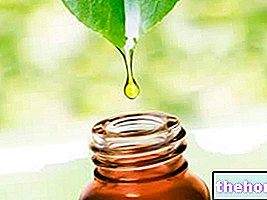
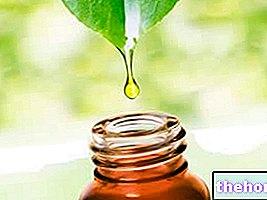
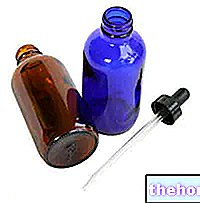
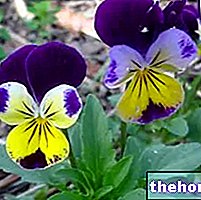
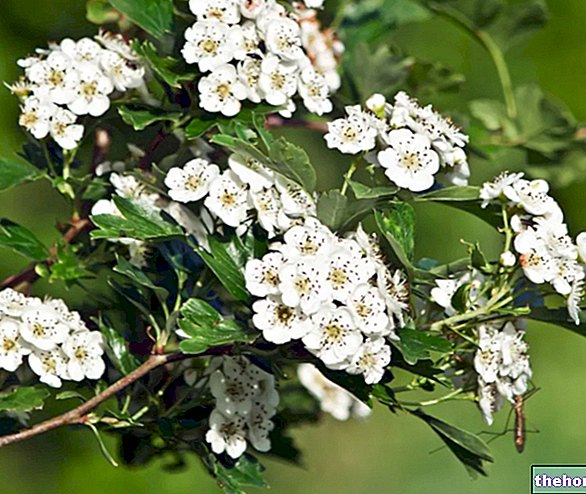
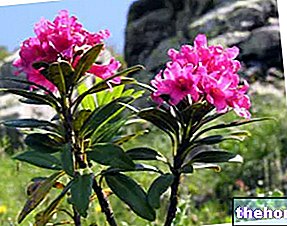
















-nelle-carni-di-maiale.jpg)




